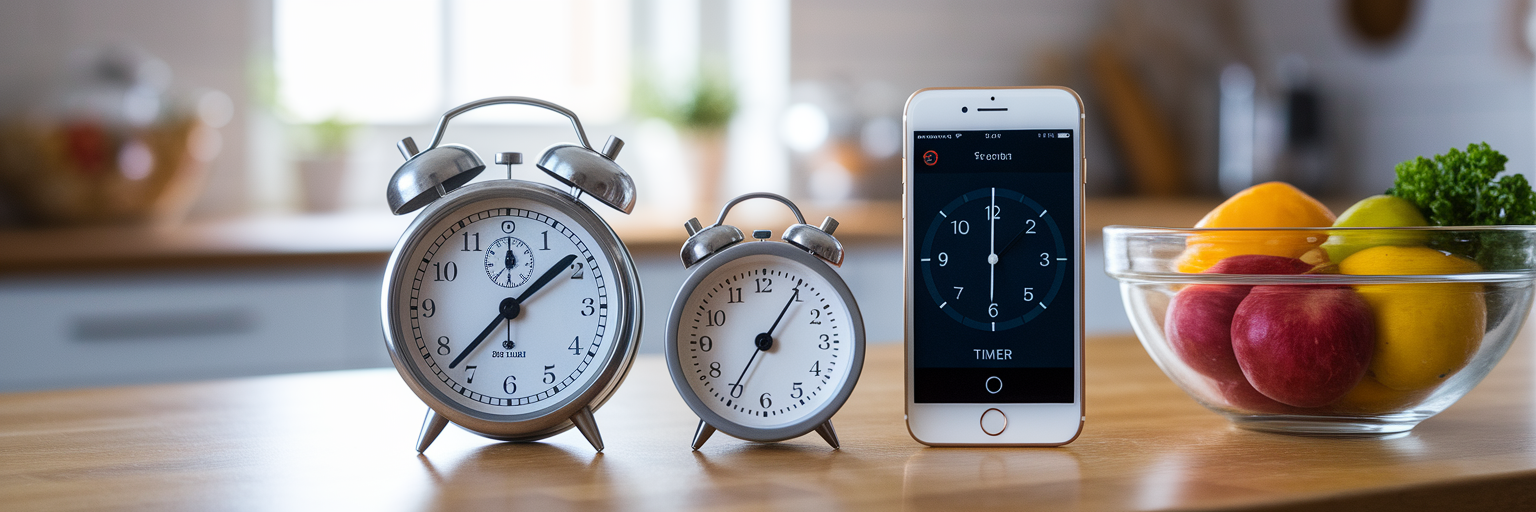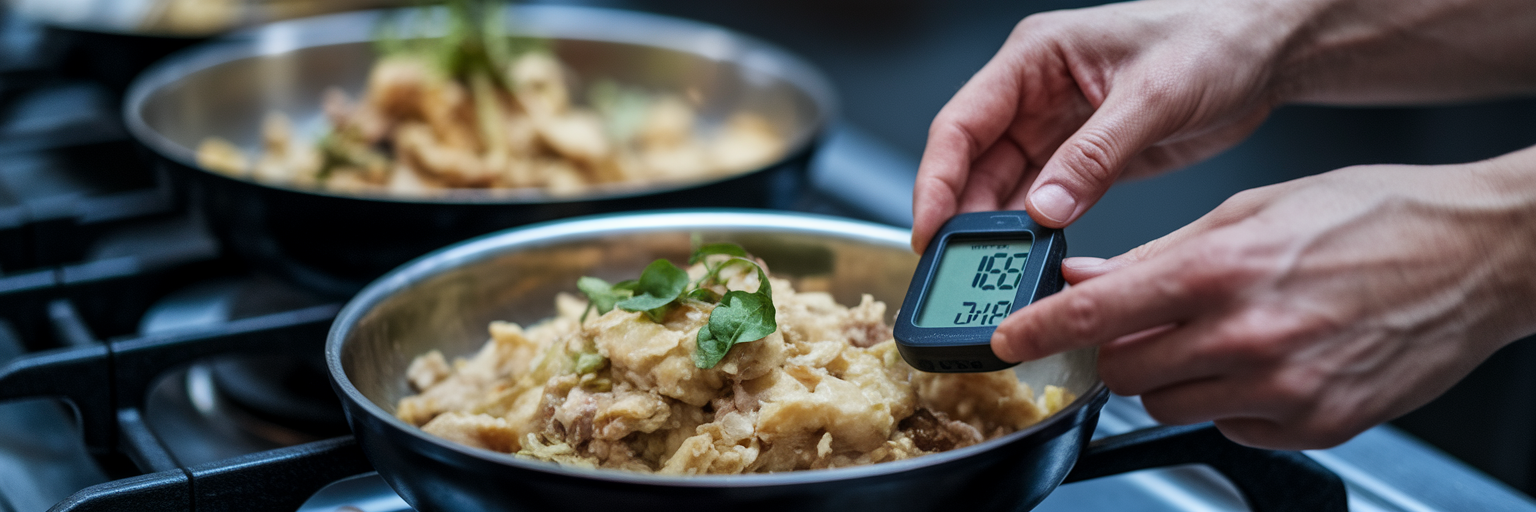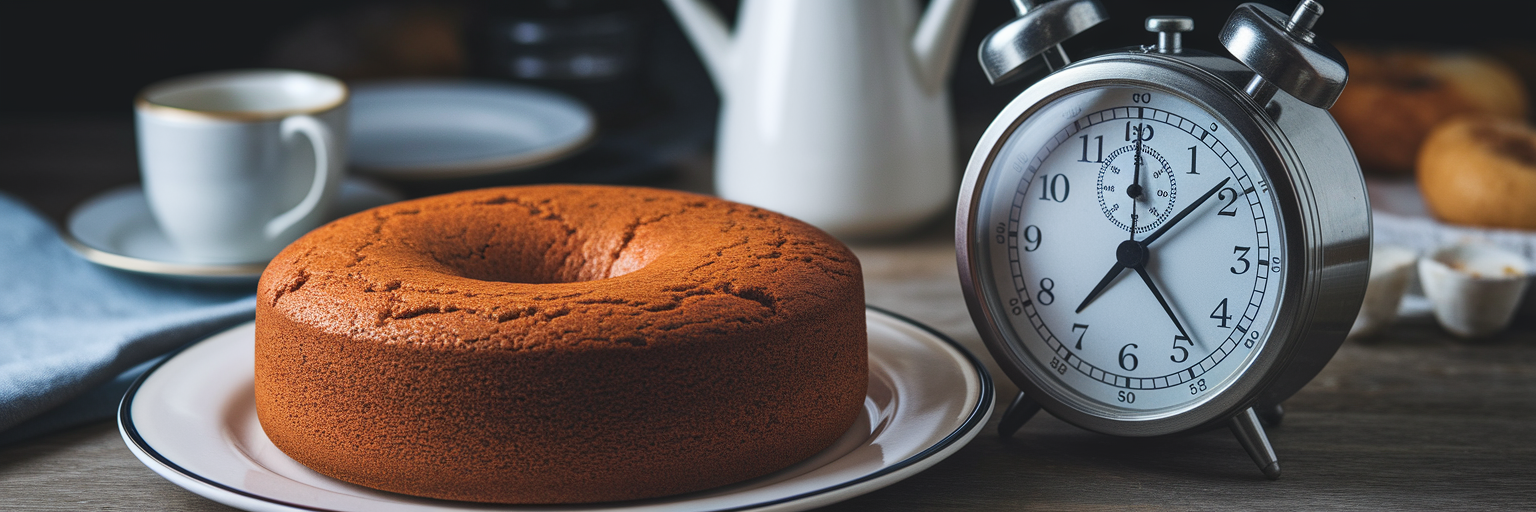Master Your Kitchen Time Using Timers for Cooking and Meal Prep
« Back to all blog postsLearn how to use kitchen timers effectively for precise cooking, consistent results, and efficient meal prep. Master your kitchen time management.

Think about any professional kitchen. Amidst the controlled chaos, one constant remains: the relentless tick of the clock and the chime of timers.
This reliance isn’t just about speed; it’s fundamental to achieving consistent, high quality results.
For home cooks, embracing this same precision can transform everyday cooking and meal preparation.
Why Precision Timing Elevates Your Cooking
Timing in the kitchen goes far beyond simply preventing burnt edges or soggy bottoms. It’s about controlling the very chemistry that creates delicious food. Specific durations influence everything from the Maillard reaction responsible for that perfect sear on a steak, to gluten development giving bread its structure, or even the enzyme activity that tenderizes meat in a marinade. Precise timing unlocks optimal flavor and texture.
Consider the difference between perfectly al dente pasta and a mushy disappointment, or a juicy roasted chicken versus a dry, overcooked bird. These outcomes often hinge on minutes, sometimes even seconds. Using a timer introduces consistency, turning guesswork into reliable execution. When you follow precise cooking methods, including accurate timing, you can replicate your favorite dishes successfully every single time.
There’s a mental benefit too. Setting a timer frees your mind. Instead of constantly glancing at the clock, wondering if it’s time to stir or flip, you can focus on other tasks. This reduces kitchen stress and allows for more effective multitasking, knowing you’ll be alerted exactly when needed. A timer acts as your vigilant assistant, preventing common errors like over or undercooking, ultimately saving ingredients, effort, and frustration. It’s a simple tool that brings professional discipline into the home kitchen.
Selecting the Right Timer for Kitchen Tasks

Now that we understand why timing is crucial, let’s look at the tools themselves. Not all kitchen tasks require the same type of timer. For straightforward jobs like boiling eggs, steeping tea, or timing a single baking sheet, a basic countdown timer often suffices. Many find an online kitchen timer incredibly convenient for these quick, single event needs due to its accessibility on phones or computers.
However, cooking often involves juggling multiple elements simultaneously. Imagine preparing a roast dinner: the meat needs one duration, the potatoes another, and the vegetables perhaps a third. This is where multi event timers shine, allowing you to track several countdowns at once. For techniques involving cycles, like kneading bread with specific rest periods or executing certain sous vide stages, an interval timer becomes invaluable. It automatically cycles through predefined work and rest periods.
Sometimes, you don’t need to count down, but rather measure how long something takes. How long did it *really* take to caramelize those onions perfectly? A stopwatch function helps you track elapsed time, allowing you to refine your personal recipes based on observation rather than just guessing. When using timers for cooking, especially in a busy kitchen, ensure the alert is clear. A loud chime or a distinct visual cue is essential when there’s background noise.
Choosing the right tool depends on your cooking style and the complexity of your meals. Consider these points:
- Number of Events: Do you need to time one thing or several simultaneously?
- Task Type: Is it a simple countdown, a repeating cycle, or duration tracking?
- Alert Preference: Do you need loud audio, visual cues, or specific tones?
- Accessibility: Do you prefer a physical device or a browser based tool?
Comparison of Kitchen Timer Types
| Timer Type | Best For | Key Features | Potential Drawbacks |
|---|---|---|---|
| Basic Digital/Dial Timer | Single, simple tasks (boiling, steeping, baking) | Easy to set, often portable | One task at a time, mechanical dials can be less precise |
| Multi-Event Digital Timer | Complex meals with multiple components | Tracks several countdowns simultaneously | Can be confusing if alerts aren’t distinct |
| Interval Timer | Cyclical tasks (kneading, specific cooking methods) | Repeats set intervals automatically | Less common, may require specific device or app |
| Stopwatch Function | Measuring process duration (sauce reduction, browning) | Tracks elapsed time accurately | Requires active starting/stopping, doesn’t alert at a set time |
| Online Timer Platform (like Alarm Clock Tab) | Versatile use, multiple timers, specific intervals | Accessible via browser, often includes multiple timer types (countdown, stopwatch, interval), customizable alerts | Requires internet access and a device (phone, tablet, computer) |
Integrating Timers into Your Meal Prep Workflow
Meal prepping often feels like conducting an orchestra of pots and pans. This is where strategic meal prep timing becomes essential for efficiency and sanity. Timers are indispensable for managing the large scale cooking and concurrent activities involved in batch preparation. Setting individual timers for bulk items like roasting a large tray of vegetables, simmering a big pot of grains, or slow cooking proteins ensures nothing gets forgotten or overcooked amidst the activity.
Adopt a ‘Component Timing Strategy’ to streamline the process:
- Plan Your Components: Identify the cooking times for each main element (e.g., chicken breast, quinoa, broccoli).
- Stagger Start Times: Determine which item takes longest and start it first. Set timers for subsequent items so they finish cooking around the same time.
- Set Prep Timers: Use timers not just for cooking, but for blocking out time for chopping vegetables, marinating meats, or portioning finished meals. This structures the workflow.
- Factor in Resting/Cooling: Don’t forget to time crucial resting periods for meats after cooking or cooling times for grains before storage. Accurate timing here impacts quality and food safety.
Using timers transforms meal prep from a potentially chaotic scramble into a structured, manageable process. It’s a core element of effective kitchen time management, allowing you to produce multiple meals efficiently without feeling overwhelmed. Think of timers as your project managers for batch cooking, keeping each task on schedule.
Advanced Timer Techniques for Complex Recipes

Beyond basic countdowns and meal prep coordination, timers play a critical role in executing intricate dishes and large, coordinated meals. Certain cooking timer techniques are non negotiable for success in specific culinary scenarios. Recipes like risotto, which require precise sequential additions of liquid, or candy making, where temperature stages are time sensitive, rely heavily on accurate timing. Setting sequential alarms or quickly resetting a timer after each step is vital.
For multi dish meals, like a holiday feast, ‘Reverse Timing’ is a powerful strategy. This involves calculating start times by working backward from your desired serving time. If the turkey needs 3 hours and must rest for 30 minutes, and the potatoes need 1 hour, you plan accordingly, setting timers to prompt each stage. This ensures everything arrives at the table hot and ready simultaneously.
Methods demanding long durations and temperature stability, such as sous vide cooking or low temperature smoking, absolutely depend on accurate timers. Here, time isn’t just a guideline; it’s a critical variable for food safety and achieving the desired texture, reinforcing the need for precise cooking methods. Furthermore, timers work synergistically with thermometers. Use the timer as a prompt to check internal temperatures, recognizing that while time guides, temperature confirms doneness. Managing these complex tasks requires focus, similar to skills needed for general productivity, which can be honed using time management tools even outside the kitchen.
Beyond Cooking: Timers for Overall Kitchen Efficiency
Effective kitchen time management extends beyond the stove. Timers can streamline numerous other kitchen related tasks, promoting organization and reducing waste. Think about applying timed discipline to the entire kitchen ecosystem:
- Focused Cleaning Sessions: Use a timer for short bursts of cleaning. Employing a technique like the Pomodoro method, perhaps with a dedicated Pomodoro Timer, can make ‘clean as you go’ or post meal cleanup feel less daunting and more productive. Set a timer for 15 minutes and see how much you can accomplish.
- Timing Non Cooking Processes: Many food preparations require passive timing. Use timers to track marinating durations, soaking times for beans or grains, pickling processes, or even as a reminder for feeding a sourdough starter.
- Inventory and Waste Reduction: Set recurring timer alerts or integrate with your digital calendar to remind you to check pantry staples, use leftovers before they spoil, or rotate stock in your fridge or freezer. This helps minimize food waste and unnecessary purchases.
By strategically using timers for these peripheral activities, you create a more organized, efficient, and less wasteful kitchen environment overall. It’s about applying the principle of timed focus to all aspects of kitchen upkeep.
Common Cooking Timer Pitfalls and Solutions

While incredibly useful, timers aren’t foolproof. Several common pitfalls can undermine their effectiveness when using timers for cooking. One frequent issue is ‘setting and forgetting,’ especially when distractions arise. The timer might go off, but if you’re engrossed elsewhere, you miss the alert. Solutions include choosing timers with louder or more distinct alarms, using visual alerts if available, setting multiple reminders, or simply keeping the timer physically on your person.
Another trap is relying solely on recipe times. Remember, these are often guidelines. Ovens vary, ingredient temperatures differ, and altitude can play a role. Use timers as prompts to check for doneness using your senses (sight, smell, touch) and, crucially, a food thermometer for meats and baked goods. Don’t blindly follow the clock; let it guide your checks.
Failing to factor in preparation time can also lead to rushed cooking. If a recipe says “cook for 20 minutes” but requires 15 minutes of chopping beforehand, plan accordingly. Consider timing your prep stages too, especially during complex meal prep. Be mindful of timer accuracy; older mechanical dial timers can be less precise. Digital options or reliable browser based tools, like those on Alarm Clock Tab, offer greater accuracy. Finally, managing multiple simultaneous alarms can create confusion. If using physical timers, label them clearly. If using a digital platform, try assigning distinct alert sounds to different tasks. Addressing these potential issues ensures your timers remain helpful allies in the kitchen.